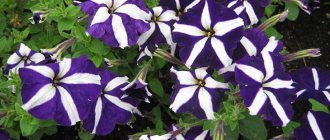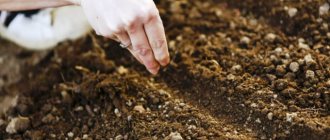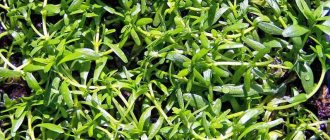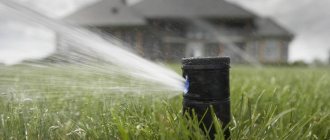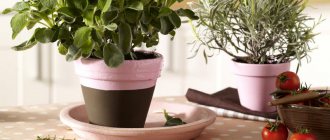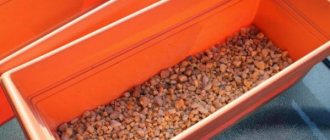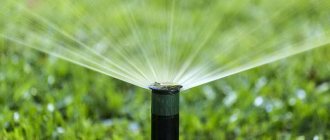Many crops can be grown in wet, waterlogged soils. Trees are the hardest to tame. It seems to have taken root, growing and making me happy. But suddenly, for no reason at all, it begins to dry out, shed its leaves, and after winter it disappears completely. The reason is that the roots have reached the dead gley layer with stagnant water. Most garden trees will not grow in these conditions, so you can only afford a very limited selection of species.
On soils with short-term waterlogging, where there is no long-term stagnation of moisture and, accordingly, no dead gley layer, many trees and shrubs adapt well. When choosing wood, it is important to correctly assess the ecological characteristics of the species - frost resistance, shade tolerance, demands on soil fertility and acidity.
Juniper
The culture is absolutely undemanding to the fertility of the soil substrate. Good drainage is much more important for it. Juniper does not respond well to stagnant groundwater and soil compaction.
If the soil is too heavy, it will thaw late in the spring. In this case, unfavorable conditions are created for the juniper.
The green part of the bush may begin to burn. Therefore, plantings must be shaded from direct sunlight.
It is easy to make the substrate looser by adding sand, straw or a little sawdust. But keep in mind that wood waste contributes to rapid acidification of the soil.
Deciduous trees
. In the forest landscapes of the North-West, there are 2 types of birch: silver birch (Betula pendula) - with branches hanging down, and downy birch (Betula pubescens) - with shorter, upward-pointing branches and white bark even at the base of the trunk. B. fluffy is more adapted to harsh climatic conditions, tolerates high soil moisture, and often grows in damp forests, along the outskirts of swamps, and lake shores. Silver birch has decorative forms and varieties with
,
coloring. Very beautiful
. All birches help drain the area; they draw water from the soil like pumps. (More about birch)
(Salix). All willows are photophilous, grow quickly, require sufficient air and soil humidity, and tolerate pruning well. They have many decorative advantages: bright shoots, beautiful and abundant leaves, various crown shapes. Very interesting group
willows, which are suitable for rock gardens, rock gardens, as small groups simply against the background of a lawn or in combination with other low and tall shrubs. For these willows on heavy clays, drainage is required. (More about willow)
(Acer rubrum) is one of the few maple species that can tolerate excessive moisture and even stagnant water. Decorative tree up to 20 m high with a large tent-shaped crown. The leaves are three-five-lobed, up to 10 cm long, reddish-green when blooming, in summer dark green above, bare, shiny, glaucous or whitish below, on red petioles, in autumn they acquire an amazing color: the upper side becomes orange, red or purple, the lower - pinkish-silver. Shade-tolerant. Unpretentious, but demanding on soil moisture, as well as air humidity. It has several decorative forms: columnar, spherical, three-lobed, Drummond. (More about maple)
(Alnus) is predominantly moisture-loving, but not particularly durable. Refers to soil-improving species. It is of interest for decorating the banks of large bodies of water, in groups in parks with soils moist from close groundwater. The speed of growth and long-term preservation of green foliage in autumn are valuable properties of alder. Mole crickets really do not like alder, and its branches are stuck into the ground where this pest is spotted. The presence of wild alder indicates the presence of groundwater. Black alder (Alnus glutinosa) has a fairly wide variety of species and forms, which differ in the shape of the crown and the shape and color of the leaves as completely different plants. (More about alder)
(Juglans mandshurica) is a tall tree up to 25 m tall with an openwork spreading crown. The leaves are very large, up to 1.25 m. It is characterized by friendly leaf fall and the shortest growing season. Easily propagated by freshly collected seeds. (More about the nut)
(Padus avium) - a tree up to 15 m high. Grows on fertile soils with excess flowing moisture, light-loving. In May it blooms with hanging white clusters, the aroma of which fills the entire surrounding area. Everyone knows the black edible fruits of drupes. It has a number of decorative forms: weeping; variegated, with yellow and white-variegated leaves; terry; Rosaceae - with pink flowers; as well as yellow-fruited. (More about bird cherry)
Potato
Growing large, healthy potatoes in clay soil is not too difficult. At the end of the season, the site is dug up and manure and peat are added to the soil.
Methods for improving soil structure for potatoes:
- add broken sifted bricks to the bed;
- apply rotted organic matter;
- use green manure.
When planting, add ash to each hole. This method protects potatoes from pests. After heavy rains, the bushes are slightly hilled and the soil between them is loosened.
Tips for caring for loams and plants planted on them
- It is imperative to dig up the soil in the autumn. In autumn, the soil is better amenable to this process and the application of various fertilizers.
- Take your time to plant fledgling vegetable seedlings. Loamy soil takes a long time to warm up in the spring, which cannot but affect the growth of a plant planted in cold soil. It is not recommended to plant seedlings on rainy and cold days.
- To plant plants with a low survival rate, you need to plant in high places in the beds; they warm up faster than low areas
- Loosen the loam. Leavening agents for loamy soils can be horse, cow or sheep manure, dried grass, sawdust, rotted straw, and seed husks.
- If in the spring there is a large accumulation of melt water for quite a long time in individual beds of a personal plot, then it is advisable to drain the land by constructing a drainage system. Drainage holes dug near artificial “lakes” are fully capable of saving the situation.
- No matter how fertile the soil on your site is, it is still necessary to feed the planted plants with mineral fertilizer complexes.
Loamy soil is truly one of the best, so if you have just such soil on your site, then by adhering to the above recommendations and tips, you will be able to regularly get a rich harvest.
Join our Facebook group
Cabbage
Broccoli, cabbage and Brussels sprouts will thrive in loam soils. The soil substrate in the garden bed is enriched with compost at the end of the season.
White cabbage prefers well-fertilized, slightly acidic or neutral soil. A mixture of humus with ordinary garden soil, to which a little wood ash has been added, is suitable.
Plants are watered twice a week. This is quite enough: loam holds water for quite a long time.
Advantages of loamy soils
- The soil is easy to work with. Contains a large amount of nutrients. The presence of all kinds of living organisms and microorganisms in loams saturates the soil with nutrients. Excellent soil breathability, which significantly increases the aeration of plant roots.
- High moisture conductivity. The ability to not only store moisture for a long time, but also distribute it evenly throughout the entire bed, especially at the roots of plants.
- Great possibility of subsurface irrigation
- A good conductor of heat and light. Excellent protection of plant roots from burns in the scorching sun.
- High soil density. Due to its density, the nutrients added during fertilization are retained in loams longer.
Lilac
Recent Entries
Lilac perennials that are beautiful, compact and do not crowd out other plants Why when buying seedlings you should not take the sellers’ word for it and how to determine the age of the plant using 3 signs Tomato seedlings have turned purple or whitish: why the color has changed and how to save the plants
To plant lilacs in the garden, it is advisable to choose a gentle slope with good lighting. The crop has certain soil requirements:
- moderate moisture;
- medium lightness;
- neutral acidity.
If the soil is too light, like forest soil, clay or black soil is specially added to it. Therefore, fertile loams for lilacs will come in handy. If the soil is too heavy, it is lightened by adding peat or humus.
Varieties of loamy soils
Loams are also divided into three categories:
- Lungs. The soil consists of 30% clay substances. The cord can be rolled up, but it is very fragile and easily falls apart. There is no question at all about folding the cord into a ring.
- Average 40% clay substances allow you to roll up a cord and make a ring out of it. But a ring that is folded with difficulty will immediately fall apart.
- Heavy. Soil where the content of clay substances is more than 50%. Such soil easily rolls into a cord and ring. The surface of the latter is covered with strong cracks, but still holds its shape.
Currant
The perennial loves moist soil, but it must be planted above the groundwater line. Currant bushes can be placed along the path; they are very decorative thanks to their carved leaves and shiny ripening berries.
Plantings should be illuminated by the sun all day, so the harvest will be more abundant.
The soil for this crop is preferably loose, with neutral acidity. Light loams are perfect. Soil nutrition is very important. Currants are fertilized at the end of the season with rotted manure.
Shrubs
(Aronia melanocarpa) grows in swamps and lowland forests, sometimes on better-drained soils and pebbles of sea coasts. Often called “chokeberry”, from which it differs in the shape of its leaves. Deciduous shrub up to 3 m high. In autumn the leaves turn bright red-purple tones. The flowers are white, less often pinkish, fragrant, reminiscent of rowan. The fruits are round, black-purple with a bluish bloom, shiny, up to 1 cm, quite juicy, edible, somewhat astringent in taste. Hybrids of chokeberry with rowan are very interesting. (More about chokeberry)
(Sambucus canadensis) is a fast-growing shade-tolerant ornamental shrub up to 3 meters tall. Grows well in acidic loamy soil with close groundwater. It has several decorative forms. (More about elderberry)
(Sambucus racemosa) grows as a shrub or small tree. The flowers are green-yellow, the berries are bright red, the leaves and branches have an unpleasant odor. It is very beautiful during the fruiting period, especially when grown in standard form. Decorative forms are most often used (nana, plumosa, tenuifolia, purpurea, flavescens). (More about elderberry)
(marsh myrtle) (Myrica gale) is found in wet meadows and grassy marshes in coastal areas. Deciduous upright shrub up to 1.5 m high. The leaves are dark, narrow, up to 6 cm long. It blooms before the leaves bloom. Male and female catkins are located on different plants. Ripe fruits are hidden among brown scales, like a cone, up to 1 cm long.
(Hydrangea arborescens) is a spreading shrub up to 1.5 m high. The flowers are greenish or creamy-white, collected in corymbose inflorescences, blooming in July-August. In winter, shelter is recommended, but after partial frosting and pruning it quickly grows back, blooming the same year. Prefers fertile, moist soils and sheltered locations. (More about hydrangea)
(Hydrangea paniculata) is a spectacular shrub with sparse branching, up to 2 m high. The inflorescences are large, cone-shaped, white-pink in color, blooms in July-September. Frost-resistant species, demanding on soil fertility, tolerates shading. It has many varieties with different flowering periods. (More about hydrangea)
(Daphne mezereum). Rarely exceeds 1 m in height. Remarkable for its very early colorful flowering. The flowers are small, very fragrant, in bunches of 2–5 or single, sitting directly on the trunk, lilac-pink or pink-lilac in color. Daphne grows slowly, but is frost-resistant. Decorative form with
(f. alba) grows faster. Grows well in semi-shaded places. At the end of summer, the branches are covered with bright red, and in the alba form, yellow shiny berries. All parts of the plant are poisonous. (More about daphne)
(Cornus alba) is a large spreading shrub up to 3 m high with crimson shoots, tolerates flooding, and is well trimmed. Has decorative forms and varieties with
. It is better to plant in a lighted place to achieve spectacular foliage color. Good for creating undergrowth, hedges, and can be grown in standard form. (More about the tree)
(Amelanchier spicata) - a deciduous shrub up to 5 m tall, characterized by rapid growth and winter hardiness, beautiful flowering and abundant fruiting. Easy to cut. In summer, dark green foliage turns bright orange-red in fall. (More about irga)
(Viburnum). Most often grown
(V. opulus),
(V. lantana) and
(V. lentago), but most suitable for waterlogged areas
(V. sargentii). It is undemanding to the soil and prefers low places with running water. Shade-tolerant, winter-hardy. A good ornamental shrub, especially spectacular during flowering and fruiting, in single and group plantings, along the banks of reservoirs. Withstands frosts down to –30°C, prefers sunny places, but also tolerates partial shade. Like viburnum, it is a good honey plant and has similar healing qualities. It is very beautiful not only when flowering, but also in autumn, when the leaves turn bright scarlet tones. (More about viburnum)
(Cotoneaster lucidus) is one of the best shrubs for creating clipped hedges. Pink flowers, collected in loose corymbose inflorescences, and black shiny fruits, which remain on the bushes until late autumn, are also decorative. (More about cotoneaster)
(Rosa rugosa), this species is easily recognized by its wrinkled leaves. Large purple, non-double flowers open all summer on the current year's shoots and on last year's shoots. By the end of summer, buds, flowers and ripe fruits can be observed on the bushes. There are white, pink and terry forms. Good in single planting, in groups and in hedges. (More about the rose)
(Sorbaria sorbifolia) is a shrub up to 3 m tall with leaves resembling rowan. It is one of the first to vegetate and blooms profusely for a month. Easily withstands cutting. Produces abundant root shoots, forming dense thickets. (More about fieldfare)
(Ribes nigrum) in addition to yield, has a number of irreplaceable decorative advantages: rapid growth, frost resistance, late leaf fall. Well suited for borders and single plantings. There are varieties with a compact crown, with dark green glossy dense leaves, as well as split-leaved, variegated and marbled forms. (More about black currant)
Geranium
This garden crop prefers fertile, well-drained soil. When planting, compost and humus are added to the hole. Then the seedling does not need to be fertilized for a long time.
Geranium actively grows green mass and does not need fertilizing. The soil around the stem is mulched with wood chips.
Flowers are planted on alpine hills and rockeries as a ground cover plant. Wild gardens are very popular among designers, where geranium plays one of the main roles.
Lianas
(Hydrangea petiolaris) is a liana up to 20 m high. The first years after planting it grows the root system and the growths are weak, then the shoots grow faster. Blooms in July-August with white flowers. Shade-tolerant, demanding on soil fertility, prefers moist loams. Winter hardiness is average, so shelter from cold winds and frost is required. (More about petiole hydrangea)
(Parthenocissus quinquefolia) is a large climbing vine up to 15–20 m. A common plant in moist forests and bush thickets on moist, rich soils. The leaves are compound and palmate. It grows very quickly and is shade-tolerant. It is very frost-resistant, can grow north of St. Petersburg without shelter, grows on any soil, and tolerates city conditions well. (More about girlish grapes)
(Celastrus orbiculata) is an elegant liana with a highly branched crown up to 12 m high. The flowers are inconspicuous greenish, the bright yellow fruits remain on the plant all winter.
(Celastrus flagellaris) is a deciduous vine, rising to a height of up to 10 m, less often creeping, with easily rooted shoots. The leaves are light green, with a finely serrated edge. Stipules are in the form of spines curved downwards, with the help of which the vine clings to the bark of trees or the ground. Requires rich soils with high humidity. (More about wood pliers)
(Lonicera caprifolium) - the most common of the climbing honeysuckles; it is quite frost-resistant, overwinters under snow, light-loving, and demanding of soil fertility and moisture. The flowers appearing in early summer are very fragrant (especially in the evening), white or yellowish inside, purple or reddish outside. Orange-red berries ripen in early August and decorate the vine until late autumn. (More about honeysuckle)
What garden flowers grow on sand?
If you happen to have a plot with just this type of soil, plant flowers and decorative perennials from our list on it - you won’t go wrong!
- Gatsania Gatsania is an exotic beauty, a sort of mixture of chamomile and gerbera. ...
- Hibiscus Syrian...
- Cleome...
- Cosmea...
- Lavender...
- Lobularia marine...
- Gigantic onion...
- Penstemon
9 Jul.
2022 Interesting materials:
How do volcanoes erupt for kids? How is a child seat secured in a car? How does CS affect a child? What is the best way to dress a child for discharge in the fall? How is bed linen marked in kindergarten? How can you wash baby diapers? How to install child protection on Rostelecom? How to start giving your child kefir? How to blow a bubble gum bubble for children? How to write an application to have your child released from class?
Areas of application of loam
Loamy soils are widely used:
- Road construction;
- Housing construction;
- Production of building mixtures;
- Agriculture - production of artificial plant soil mixtures;
- Construction of complex engineering structures - the insulating properties of the soil allow it to be used in the construction of dams, dams, strengthening river coastlines;
- Landscaping - most often, loams are used to construct natural pools and landfills;
- Chemical industry. For example, the creation of inert utensils that are resistant to aggressive chemical compounds;
- Medicine - production of sorbents, cosmetics.
Characteristic
Loamy soil is a combination of clay and sandy soil. At the same time, she adopted only their advantages, but was deprived of their disadvantages.
Loamy soil comes in different colors depending on the impurities
The structure of loam is lumpy. And it contains large and dusty particles.
Advantages of loam:
- ease of processing,
- high supply of nutrients,
- suitable for growing any crops,
- uniform heating in spring and summer,
- It allows air to pass through well and retains moisture.
Loamy soil takes longer to dry out after rain and rarely cracks during drought. In the spring, melt water takes longer to drain from it, and in the summer, useful substances are retained. But with excess moisture, plant roots receive oxygen more slowly.
The main disadvantage of soil is that it needs to be loosened frequently. But this must be done, because after cultivation the soil warms up faster and allows moisture to pass through better.
Types of loam according to clay content:
- 20–30% - light loamy;
- 30–40% - medium loamy;
- 40–50% are heavy loamy.
To determine the type of soil, take a small amount of soil, moisten it, and roll it into a cord. Try making a ring out of it. If the cord is easy to make, then the soil is clay. Loam cracks when you roll the ring, and sandy soil crumbles in your hands.
Grading
Loam consists of several fine fractions. It is their ratio that separates it from clay and sandy loam. The granulometric composition is determined by various methods. For example, they measure the rate of sedimentation of particles in water and air, determine the physical properties of the suspension, and simulate the natural sedimentation of particles.
Most often, elutriation is used to determine the volume of the sand component (grains from 2 mm to 0.05 mm). To find out the number of clay particles (less than 0.005 mm), the sample swelling method is used. Silty (0.05-0.005 mm) is calculated by the difference between clay and sand.
Density
Density is the ratio of mass to volume of soil. Units of measurement are g/cmᶾ or kg/mᶾ.
There are the following types of this indicator:
- Overall Density (measured at normal moisture and buildup)
- Solid phase density (dry compacted sample density)
- Skeletal density (determined in a dry sample with normal build)
Overall density takes into account solids, water and air. It will change depending on humidity and pore size. In the upper layers it may be less than in the lower ones. Indicators for loam range from 1700 kg/mᶾ to 2100 kg/mᶾ.
The density of the solid phase is a more stable indicator, which depends on the mineral composition. For loams it is 2690-2730 kg/mᶾ. The parameter may increase if the soil contains admixtures of pebbles, crushed stone or boulders. It decreases with increased organic content.
Porosity
Porosity is the ratio of the volume of pores in the soil to the total volume of the sample. This indicator is measured in fractions of a unit or percentage. For loams it is 0.5-1. Porosity in the upper loose layers is higher than in the lower compacted ones. It increases in the presence of organic substances.
The indicator affects many characteristics. For example, loam with high porosity shrinks more because it allows water to pass through better.
Plastic
This property is one of the distinctive features of clay soils. They are able to change their shape under the influence of external force and maintain this state after its cessation. The connections between individual particles are not broken. The indicator is measured as a percentage or fraction of a unit.
Tests are always carried out on wet samples. The soil is rolled into a ball and then crushed. The loam produces a flat cake with cracks along the edges. This distinguishes it from clay, which has no cracks, and from sandy loam, which falls into pieces. The number, or plasticity index, of light loams is 7-12%, heavy (with a high content of clay particles) – 12-17%.
High plasticity of the soil causes shrinkage of foundations and the appearance of cracks on the walls of buildings. This characteristic is important when using loam in the production of ceramics. Here, heavy varieties are more valuable, since they are easier to form into products.
Fluidity
Fluidity is the opposite property of plasticity. When the soil is too saturated with moisture, it loses its ability to change and maintain its shape and becomes semi-liquid. The indicator is measured in fractions of a unit.
Depending on its value, loams are divided into:
- Solid (fluidity is zero)
- Semi-solid (0-0.25)
- Tight plastic (0.25-0.5)
- Soft plastic (0.5-0.75)
- Fluid-plastic (0.75-1)
- Fluid (more than 1)
The indicator is influenced by the strength of internal bonds and soil porosity. It is important to determine it in order to predict at what humidity the soil will begin to “float”. It is dangerous to build buildings on such unstable soils.
Strength and deformability
Strength is the ability of soil to withstand certain loads without breaking the structure. It is closely related to resistance to deformation. After all, the sample first changes shape and then begins to collapse.
Strength and deformability are tested by uniaxial, triaxial, compression and suffosion compression, and single-plane shear. For loams, it is important to determine the degree of swelling and shrinkage. These parameters are measured in fractions of a unit.
Loams are not very durable. They are characterized by stable plastic deformations.
When saturated with moisture, these materials swell. The characteristic is not as pronounced as that of pure clay, but also affects the ability to build on loamy soils.
According to the degree of swelling they are divided into:
- Non-swelling – less than 0.04
- Low swelling – 0.04-0.08
- Medium swelling – 0.08-0.12
- Highly swelling – more than 0.12
The ability to change its volume when saturated with water is enhanced if the loam contains a lot of montmorillonite. As the amount of quartz and kaolinite increases, swelling decreases.
The ability to shrink is affected by the mineral composition of the soil, humidity, swelling, and porosity. The more pronounced the tendency to plastic deformation is, the more the sandy loam subsides.
According to this indicator, it is divided into:
- Non-subsidence – less than 0.01
- Low subsidence – 0.01-0.03
- Average settlement – 0.03-0.07
- Strong subsidence – 0.07-0.12
- Extremely subsidence - more than 0.12
Soils with an admixture of crushed stone, pebbles, silicon, and also low porosity have weak subsidence. It increases with a high content of clay particles and organic matter, a decrease in density and an increase in humidity.
Field
Loam is mined from the same quarry as other related rocks. You can check the location by layers. They are placed depending on the volume of kaolin fragments. Loam is located above the clay layer. When extracting loamy soil, each layer is developed separately, since they differ in the amount of useful components.
This type of soil is considered one of the most common. It is mined in most countries of the world. This is due to the ease of extraction and the wide range of uses of natural material.
